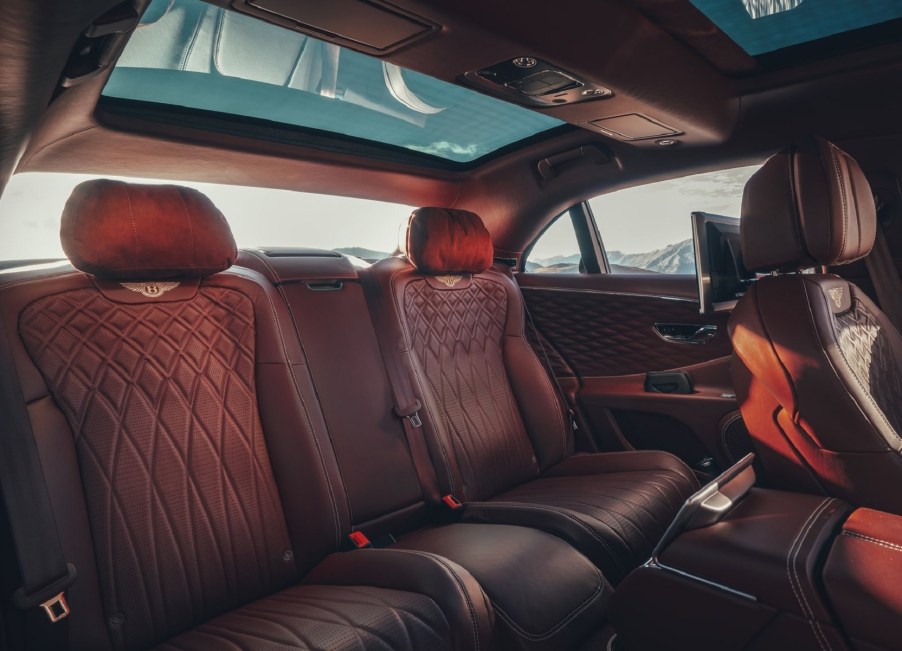
Are Leather Car Seats Really Worth It?
Nowadays, you don’t have to spend Rolls-Royce money to get luxury features. True, options like champagne flutes and scent diffusers aren’t exactly run-of-the-mill. However, it’s possible to find heated and massaging seats on more everyday vehicles, even on pickup trucks. And another such feature is leather upholstery. But while leather car seats may symbolize luxury to some, are they really better than fabric or vegan ones?
When did leather car seats become the symbol of luxury?
A leather car seat wasn’t always short-hand for ‘luxury’ or ‘expensive price tag.’ At least, not directly, Autotrader explains.
Only the very wealthy could afford the first cars, not to mention the personnel needed to keep them running. Specifically, a mechanic and a chauffeur, often the same person. These early cars, despite their mechanical complexity, often looked quite similar to horse-drawn carriages. Which meant they were also named according to carriage terms.
For example, in the early 20th century, one particularly popular car style was the ‘town car,’ aka ‘coupe de ville.’ Which, yes, eventually became the names of a Lincoln and Cadillac, respectively. These town cars usually had an enclosed section for the passengers, while the chauffeur’s row of seats was open to the elements. Again, very much like in carriages.

Back then, cloth upholstery was considered the height of luxury. However, cloth doesn’t do well exposed to the elements. That’s not an issue for an enclosed passenger space. But what about the chauffeur? The solution: leather car seats. Many high-end cars, including the first Rolls-Royce Wraith, had leather in front but cloth in the back, Bring a Trailer reports.
Why leather upholstery, though? Because, among other things, it’s very durable compared to fabric. That’s why, despite its famously low price, the Ford Model T had leather car seats. The material just withstood sunlight, rain, and snow better than cloth.

Eventually, though, cars gained enclosed roofs, and owners started getting behind the wheel. As a result, leather car seats became an option, rather than a necessity. But because of its early history, and rising material cost, it eventually became a symbol of luxury.
Are there benefits to leather upholstery vs cloth seats?

To be fair, not every automaker necessarily treats leather upholstery as its most premium option. For example, although the Toyota Century offers leather, the vast majority of buyers choose wool seats, Motor Trend reports. That’s because wool is quieter, Roadshow explains, and breathes more freely than leather.
Meanwhile, although leather breathes to an extent, it often sticks to your skin in hot weather, and feels chilly in cold weather, ItStillRuns reports. Plus, it’s more-easily scratched.
Modern fabrics, especially vegan-friendly ones, have another benefit over leather car seats: they’re lighter. That’s particularly useful for EVs, the Wall Street Journal explains, which depend on low curb weight to eke out some extra range. It’s little wonder Polestar and Tesla offer vegan-friendly interiors. Also, tanning all that leather produces more waste than weaving cloth.
Leather upholstery does have another advantage, though. Although leather car seats require regular maintenance, or they’ll crack, they’re easier to clean than fabric ones. They also don’t hold odors the same way cloth seats do, Bryant Motors reports.
Choosing leather car seats over cloth or vegan-friendly ones is ultimately a personal choice. If you like the look, the smell, the feel, and the durability, go for it. But for something easier to live with, and arguably more comfortable, cloth isn’t necessarily a downgrade.
Taking care of leather
Maintaining your leather upholstery isn’t too different from taking care of your hair, Carfax reports. Both need regular cleaning and conditioning.
Start by vacuuming up any dirt or grime, then using a microfiber towel or toothbrush, wipe the seats down with a leather cleaner. Take care, especially with perforated leather, to put the cleaner on the towel, not directly on the seat. After that, apply a leather cleaner, let it soak into the upholstery away from direct sunlight, and buff it with a cleaning cloth.
Follow more updates from MotorBiscuit on our Facebook page.


